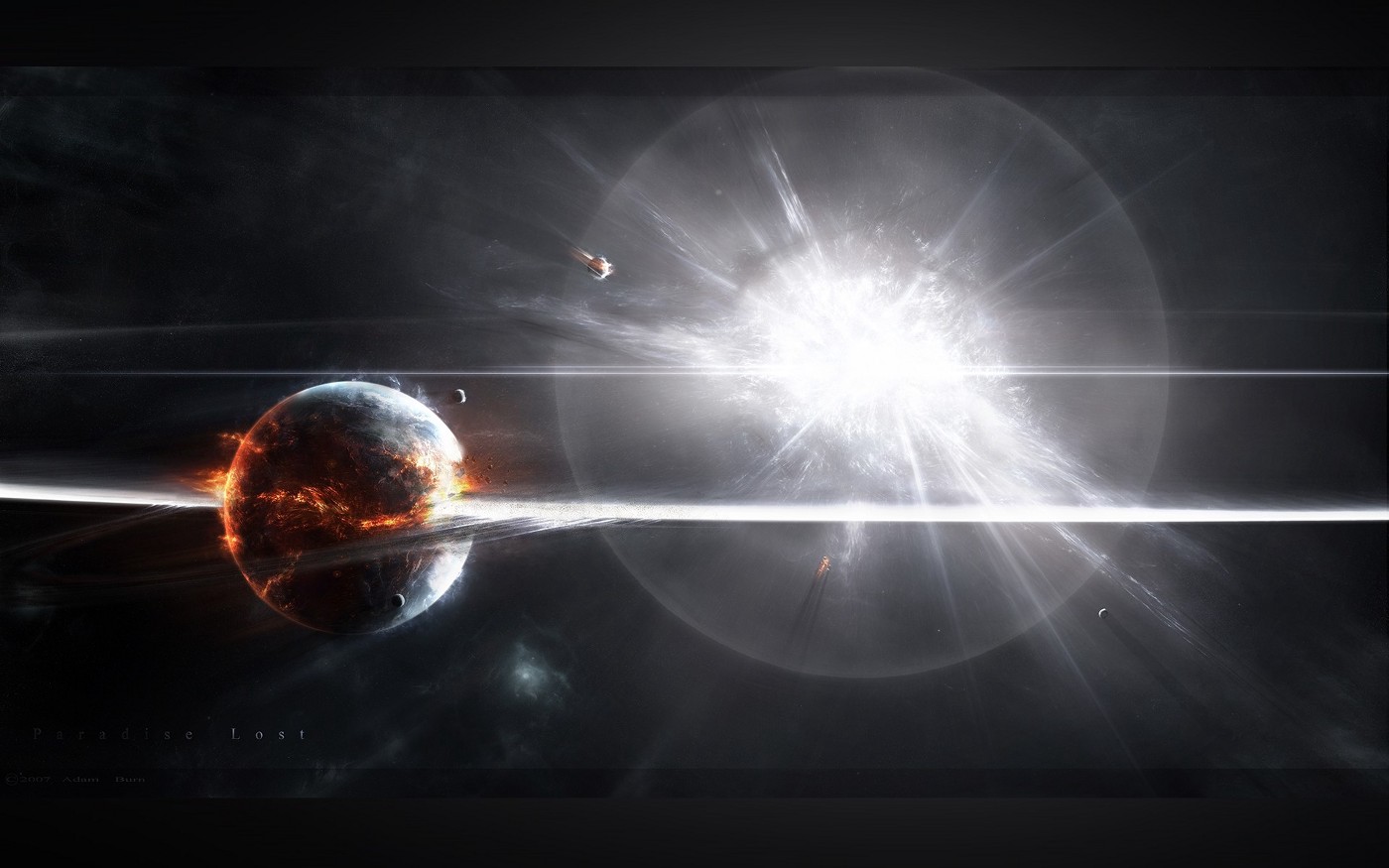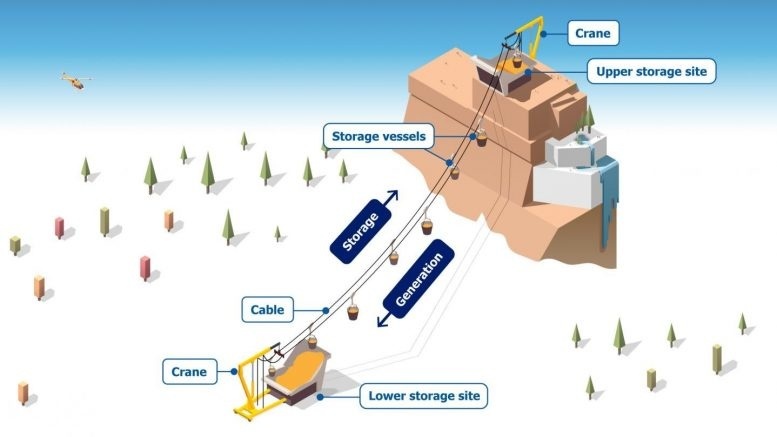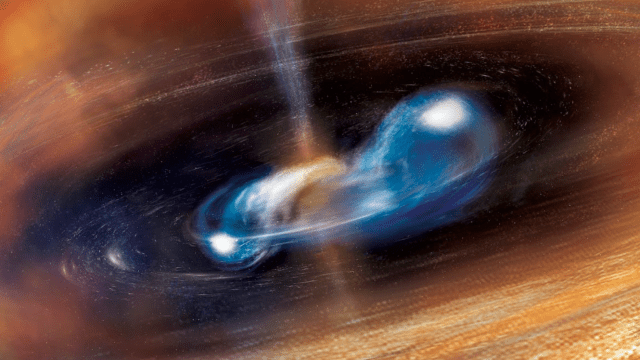This shockingly simple battery could store energy forever
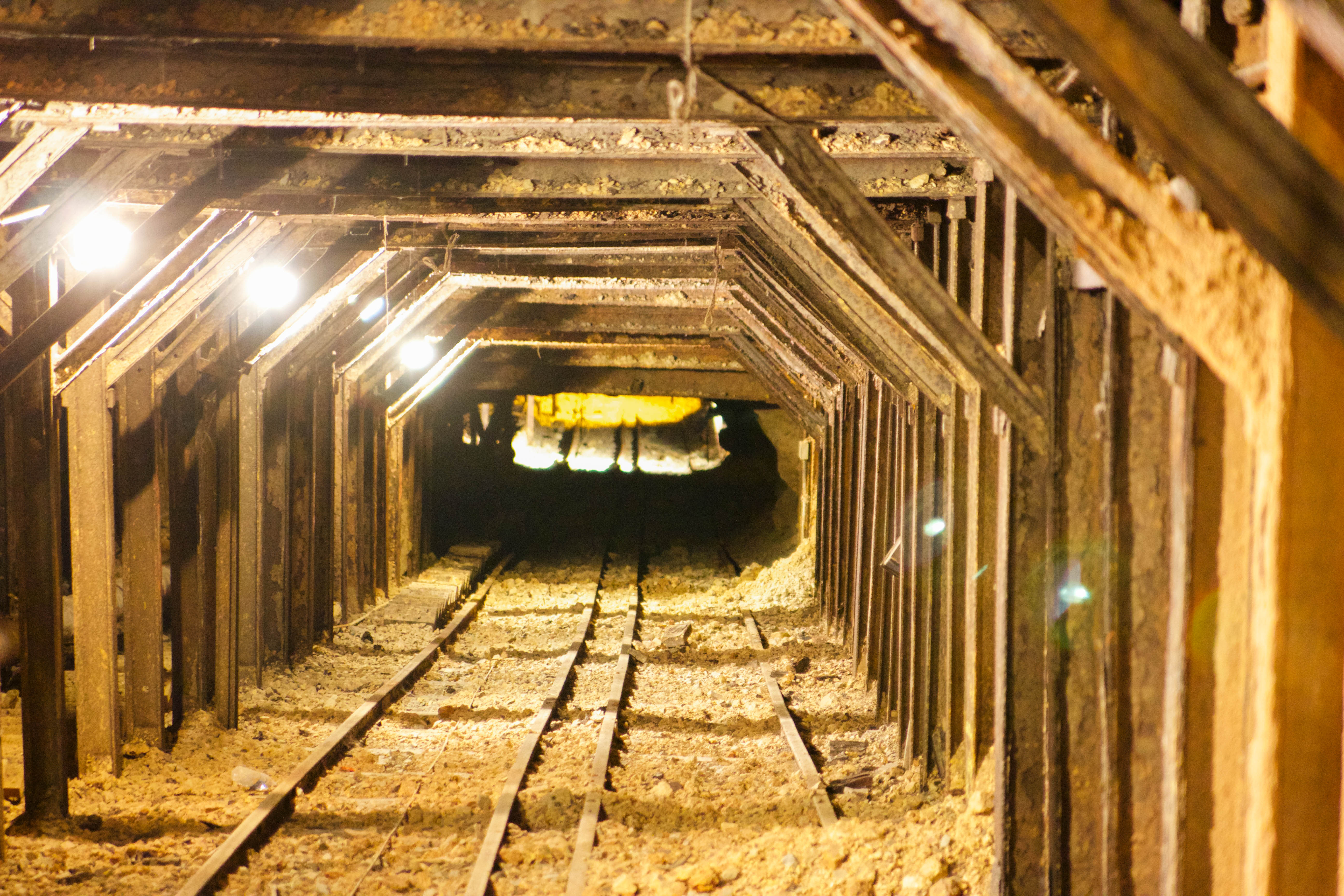
- One of the most annoying problems in energy storage is that of the battery: no matter how we improve it, stored electric charges always dissipate/discharge over time.
- Despite many attempted advances, the ancient “acid battery” and the nearly-as-old concept of a capacitor both remain unsurpassed as far as storing large amounts of energy go.
- Yet one even older technology, that of gravity batteries, could store enough excess renewable energy to keep the planet in business during off-hours or even off-seasons.
Back in the 1950s, 1960s, and 1970s, humanity had a golden window to revolutionize how we handled energy all across the globe. The dangers of global warming and global climate change — directly resulting from our burning of fossil fuels and the release of greenhouse gases into the atmosphere — became well-known during this time, while simultaneously, the secrets to nuclear fission power had been uncovered. The fact that we haven’t transitioned away from fossil fuels while our energy needs have grown and grown has put humanity into a difficult situation: our environmental and ecological problems continue to worsen, while our energy consumption continues to rise.
Yes, we have reasons to be hopeful for the future. Nuclear fission plants could still be built on a large scale, safer and more effectively than ever before. Nuclear fusion’s vaunted breakeven point has been achieved, meaning a fusion-powered future is within reach by century’s end. And while renewables like solar, wind, and hydro power are currently expanding in their energy production worldwide, the energy from them isn’t available on-demand, but must be stored during the lulls, so the energy is sufficiently available during peak times.
This energy storage problem has been a dealbreaker for scaling up renewables so far, but one new — or rather, very old — technology could finally solve this problem once and for all: the gravity battery. Here’s why it’s such a big deal.
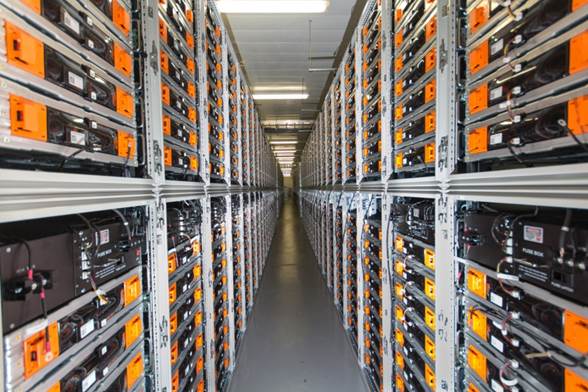
When it comes to delivering electrical power to the world, generation-on-demand is clearly the easiest option. Whether you’re burning fuel for your power, controlling the rate of energy-releasing nuclear reactions, or opening-and-closing a number of flow-paths that turn hydroelectric turbines, the ability to ensure that “supply matches demand” is how you best expend the minimal amount of energy required to give everyone the energy-and-power they’re asking of the grid without either wasting energy that must be dissipated (by going over) or by causing brownouts, blackouts, or other forms of power failures (by going under).
However, while fossil fuel technologies, nuclear fission reactors, and (under certain conditions) hydroelectric power can have their energy outputs tweaked to meet real-time changes in demand, many types of renewable or even future energy solutions simply aren’t as reliable or controllable in real-time. For those types of energy, the only realistic solutions are to have them be a sub-dominant contributor to our power grid, so that “controllable” power sources can always make up the difference, or to invest in energy storage technologies, so that even during off-peak-production times, available energy can still be distributed.
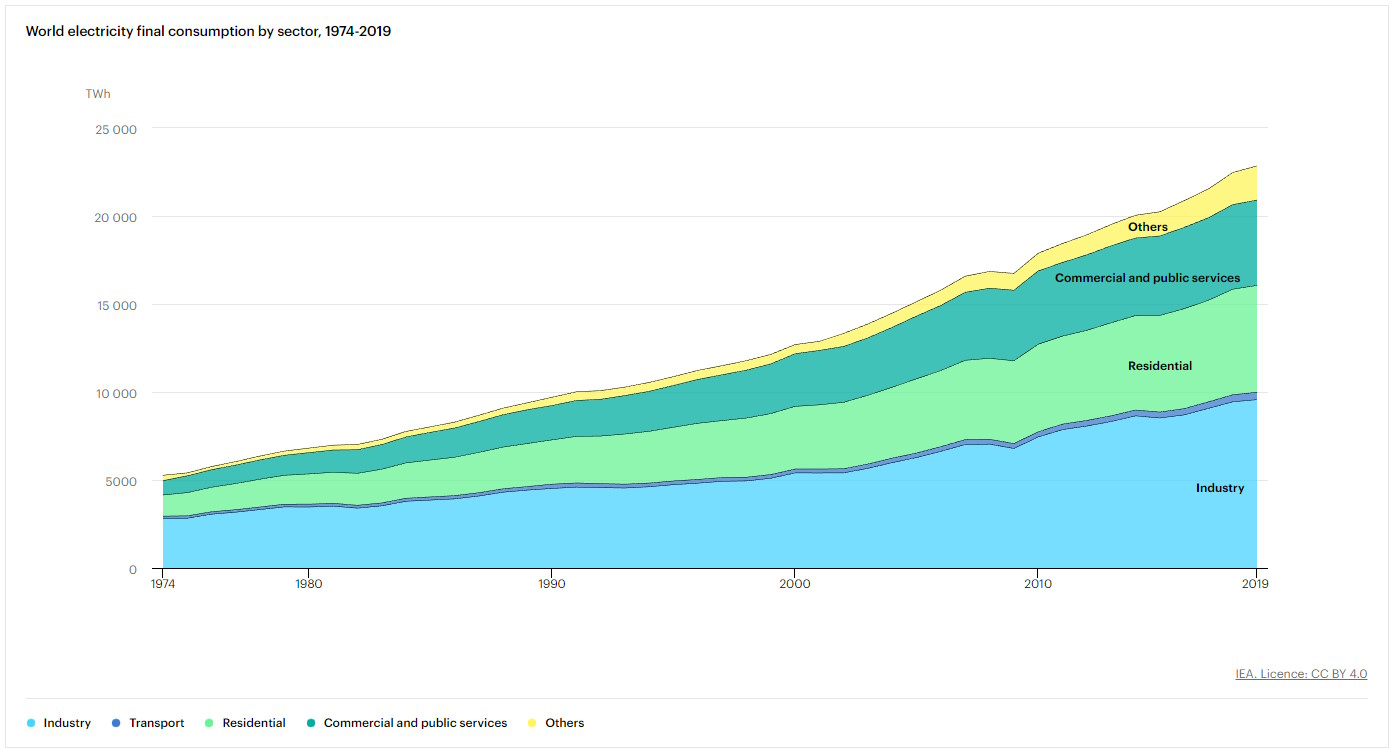
Fossil fuel, old-style fission, and filled-dam hydropower aside, most of the other major energy sources — present and future both included — all require some sort of energy storage to meet demands when production is either not occurring or not occurring at the highest possible levels.
- Nuclear fusion reactions, at least as will be achieved through inertial confinement fusion, release all their power in one shot, with significant time lags between successive shots.
- The idea of collecting solar power in space and beaming it back to Earth is another future tech that is very promising for meeting energy demands, but that necessarily has significant time lags between the times at which energy is delivered.
- Wind power is highly variable, both daily and seasonally, as it’s driven by the speed at which wind flows past the turbines that are designed to harness it. Because doubling the wind speed quadruples the amount of energy a wind turbine can generate, energy storage is needed to harness wind power during peak production, and then to release it at later times.
- Solar power suffers from a similar failing as wind, with cloud cover, seasonal sunlight, and day/night variations creating severe differences in how much energy a solar power plant can produce, both over a day and throughout the year.
Many other sources of non-constant energy, including geothermal, (seasonal) hydroelectric, and even ocean-current power will also require similar storage capabilities to provide even levels of power, as required, throughout the varying days, months, and years.

If you want to store large amounts of electrical energy for on-demand use later on down the road, the leading technology for that comes in two forms: banks of either batteries or capacitors. Both of these storage devices are based on the same principle: the separation of different types of electric charges.
Whenever you apply a voltage — also known as an electric potential — to a region of space, you’re creating a gradient: a difference in potential across that region. That gradient is also known as an electric field, and electric fields cause:
- positive charges, like protons, positrons, and bare atomic nuclei, to flow in the direction of the electric field,
- and negative charges, like electrons, muons, and negatively charged (e.g., hydroxyl) ions to flow against the direction of that electric field.
As a result, on one side of the battery or capacitor, you get a pile-up of negative charges, and on the other side, you get a pile-up of positive charges. Unfortunately, even this concept of simply “charging up” a battery or a capacitor, to store electric potential energy in a device by creating a separation of charge, costs you in terms of efficiency the greater the amount of charge you want to store.

The reason is simple: the more a device is charged up, and the more energy is stored within it, the greater the amount of energy is needed to overcome the repulsive forces to store additional amounts of energy. You may have noticed when charging your personal electronic devices — things like your phone, tablet, or laptop — that it seems to fast-charge up to about 60% very rapidly, then it slows down and takes much longer to charge to, say, 90%, and then that final little bit to get all the way up to 100% takes the greatest amount of time of all. That’s not a coincidence; that’s merely the physics of how electrical energy storage works.
Even more annoyingly, once you spend all that energy getting your battery or capacitor all charged up, it doesn’t stay that way forever. Even if you build a perfect charge-storage system, with all your negative charges on one side and all your positive charges on the other, we have this annoying little problem on Earth: we’re constantly getting bombarded by high-energy particles traveling throughout the Universe. They strike Earth’s atmosphere, produce showers of charged “daughter” particles, and many of these particles make it down to Earth’s surface. As they pass through your charge storage device, they lead to a slow but inevitable discharge, ensuring that at least some of your precious stored energy is going to get lost.

If only there were some way to put this generated electrical energy into storage in a way that would not dissipate, but that can then be released on-demand during off-peak times. The idea is that:
- nuclear fusion plants produce too much energy to be used all at once, but rather each liberated burst could have its energy stored up and used over time until the next needed burst re-energizes the storage plant,
- collected power from other means can be stored indefinitely until used as necessary,
- and that wind, solar, and other renewables could have their excess energy accumulated and stored during windy/sunny times, and then released and utilized during still/cloudy/night times.
Remember that in order to release energy, you need some way to make electric charges flow, but that doesn’t necessarily mean that in order to store energy, you need to move electric charges into place so that they can easily flow. Electrical energy can be stored, but it can also be generated on-demand from all sorts of other forms of potential energy, including electrical, chemical, nuclear, and even gravitational potential energy. And it’s that very last storage method — of gravitational potential energy — that just might lead to the ultimate type of energy-storage device: a gravity battery.

Perhaps the first type of potential energy we learn about is also the simplest and most straightforward: gravitational potential energy. Whenever anything with a mass drops from a higher elevation to a lower elevation in Earth’s gravitational field, including:
- a ball rolling down a hill,
- a book falling off a shelf,
- a human falling from a standing to a prone position,
- or a skydiver jumping out of an airplane,
you’re witnessing an example of gravitational potential energy being converted into energy-of-motion, otherwise known as kinetic energy. We know, from experience (and from measurements), that balls rolled down hills reach the bottom in motion, with a large amount of kinetic energy. We know that books falling off shelves, humans falling down, or skydivers jumping out of airplanes all gain energy, and at the moment they hit the ground, their energy-of-motion (or kinetic energy) gets converted into many other types of energy: heat, sound, vibrations, etc.
The key is to realize that the “useful” energy that’s released from the energy of motion all derives from the same source: an object that was previously raised up, in an energy-requiring move, against the gravitational pull of Earth.

Gravitational potential energy — wherever you have it — can just as easily be converted into electrical energy. For example, imagine the following setup:
- you have a vertically-oriented chain with gears at the top and bottom,
- with platforms affixed to the chain at various intervals,
- and then you place a mass on one of the platforms near the top.
What happens next?
The mass falls, causing the chain to move and the gears to turn. Now, if you connect the gears to a turbine, the turbine will spin when the chain moves. If you use that spinning turbine to generate power, it will take that mechanical energy that went into the motion of the gear-chain-platform-mass system and convert it into electrical energy, which can now be distributed anywhere throughout a connected power grid.
In other words, just by having some masses that were raised up to some height, previously, you can generate power at any time — in any amount (if you have enough raised masses) — simply by moving the masses onto the high-elevation platforms, turning gravitational potential energy into mechanical energy and then into electrical energy.
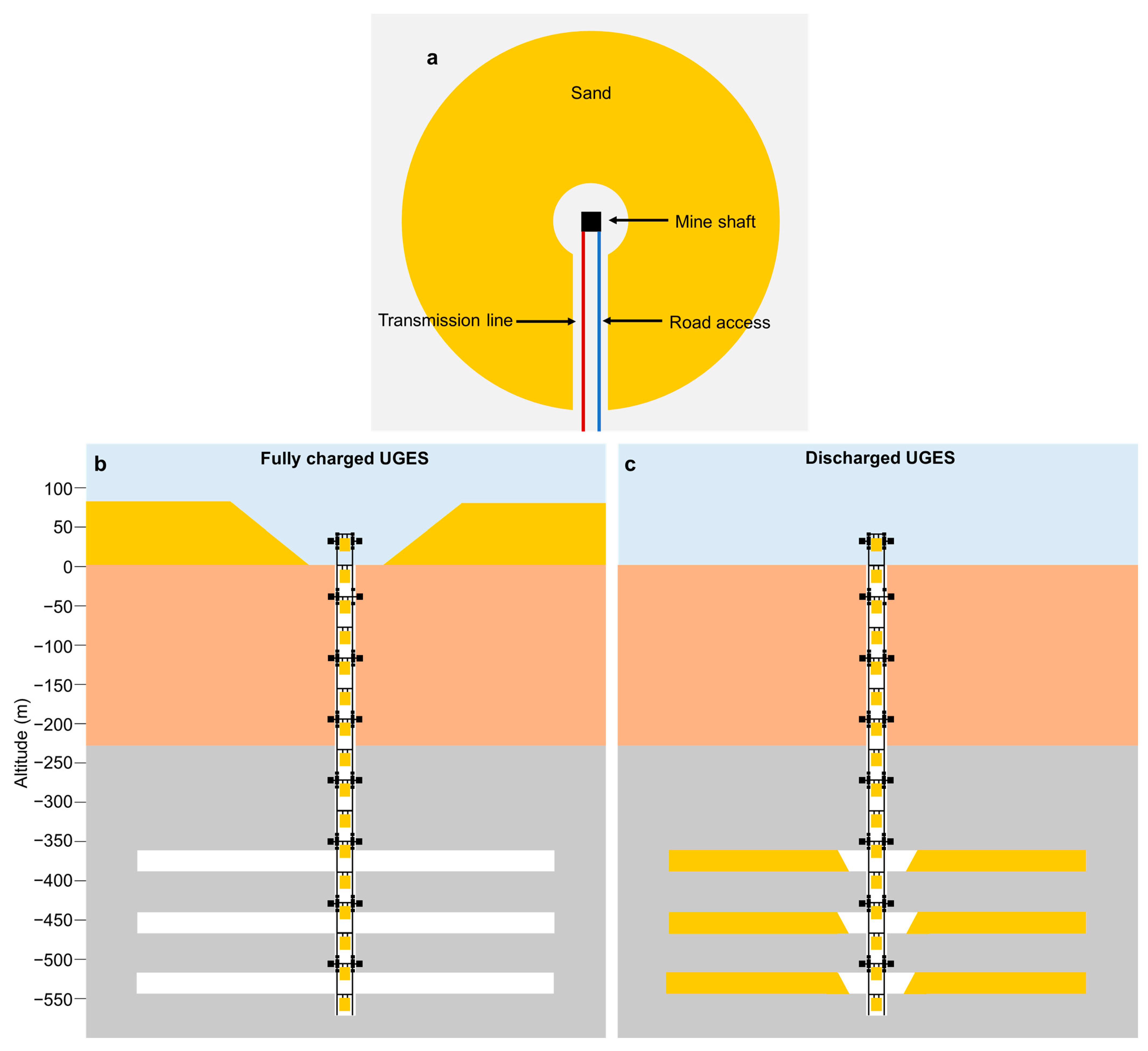
That’s the big idea of a gravity battery. All you need to do, in order to gather and store this excess energy, is to devise a system that uses the excessively generated energy to raise masses from the bottom of this “gravity battery” up to a higher level, and to do this whenever excess energy is generated over what is needed. Then, when you’re ready to release that stored-up energy, simply move a raised mass back onto one of the higher-elevation platforms, and as it falls down to the bottom level, it causes the gears to turn, and if they’re hooked up to a turbine, energy can be released.
The wonderful thing about this idea is that the infrastructure for it already exists: in the form of mine shafts and mine carts that exist all over the world. By using decommissioned, underground mines, with:
- a vertical shaft,
- along with electric motors and generators,
- that are capable of lifting, dumping, picking up, and descending with weights (e.g., large volumes of sand/dirt),
enormous amounts of energy storage can be achieved. The technology is estimated to have a global energy storage potential of 7-70 TWh (Tera-Watt hours): enough (at the high end) to power the entire world for a full 24 hours.
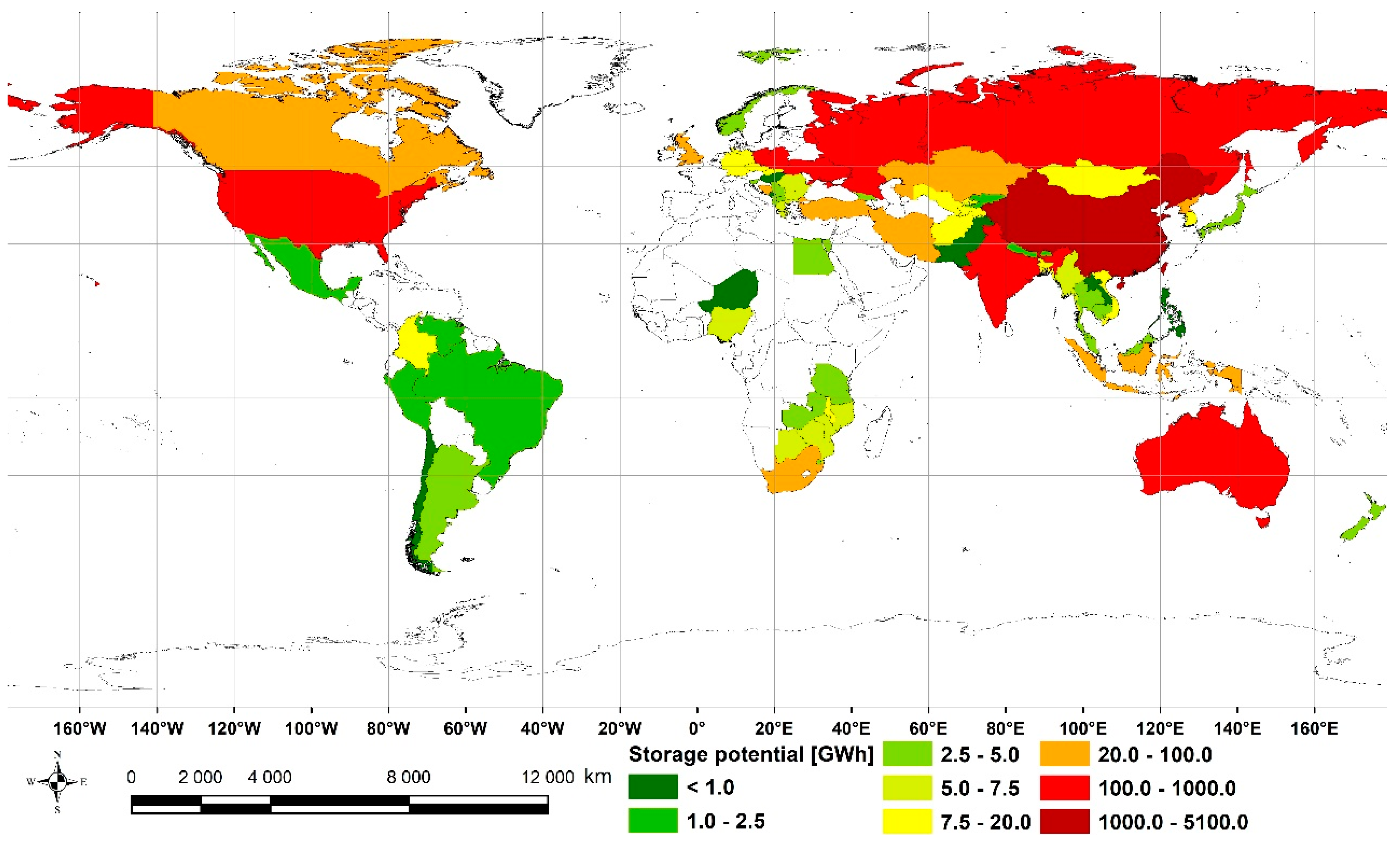
Best of all, once energy has been invested into a mass, raising its elevation by a certain amount, that energy will never dissipate. Cosmic rays won’t cause mass to “discharge” to a lower energy state; it will simply remain where you left it until you come and get it again to drop it back down to a lower elevation. Only, when you do, that same amount of energy you invested into raising it — minus whatever inefficiencies are in your chain/gear/turbine/mass transport system — gets liberated back out again. There’s no risk of shorting out your device, of accidental discharges, or of contaminating the land, water, or air. It’s simply a foolproof way to store excess energy.
It’s estimated that there are millions of abandoned mines across the globe, presently being used for nothing at all. In other words: the infrastructure needed for gravity batteries is already present, in great abundance, in many locations all across the world. We know that renewable energy sources, especially solar and wind, are highly variable and not necessarily reliable from moment-to-moment. However, with the proper type of non-dissipative energy storage, such as that offered by the gravity battery, we could truly have a robust defense against a rainy day. It might be the smartest, lowest-tech grid-management solution ever implemented, and despite its shocking simplicity, it really could store energy forever!


